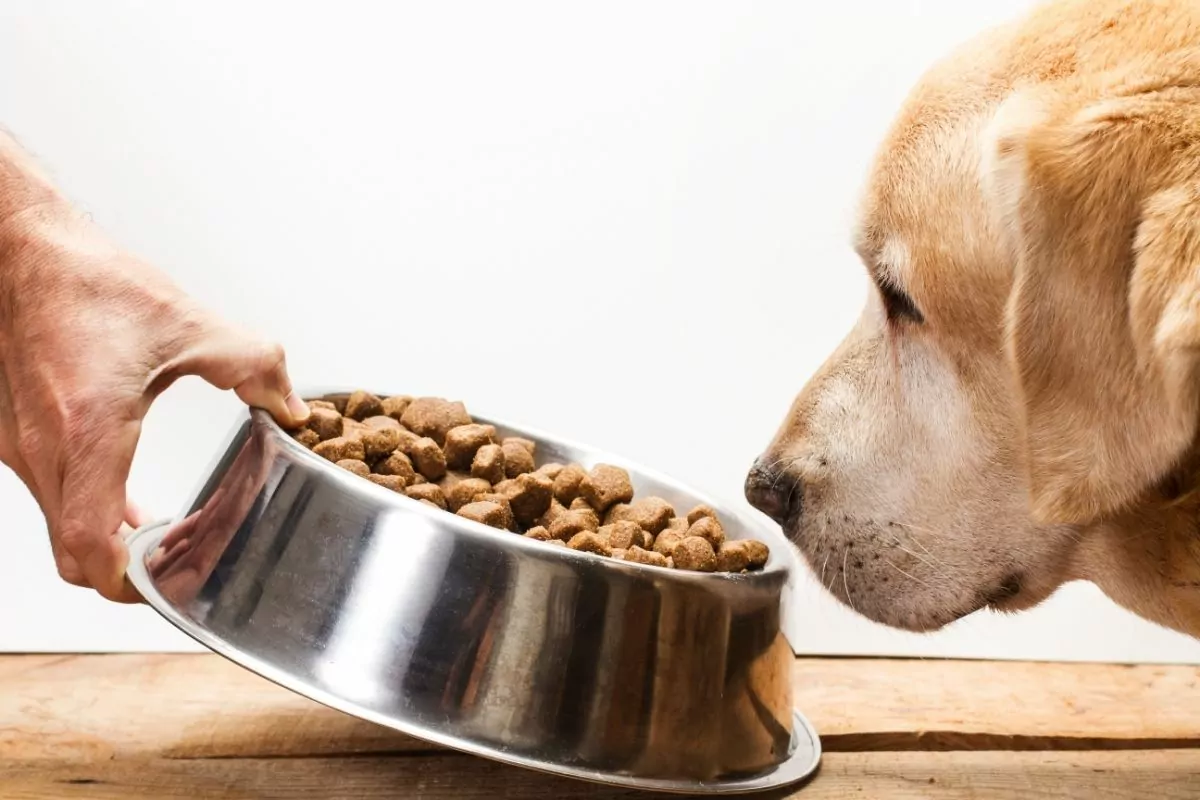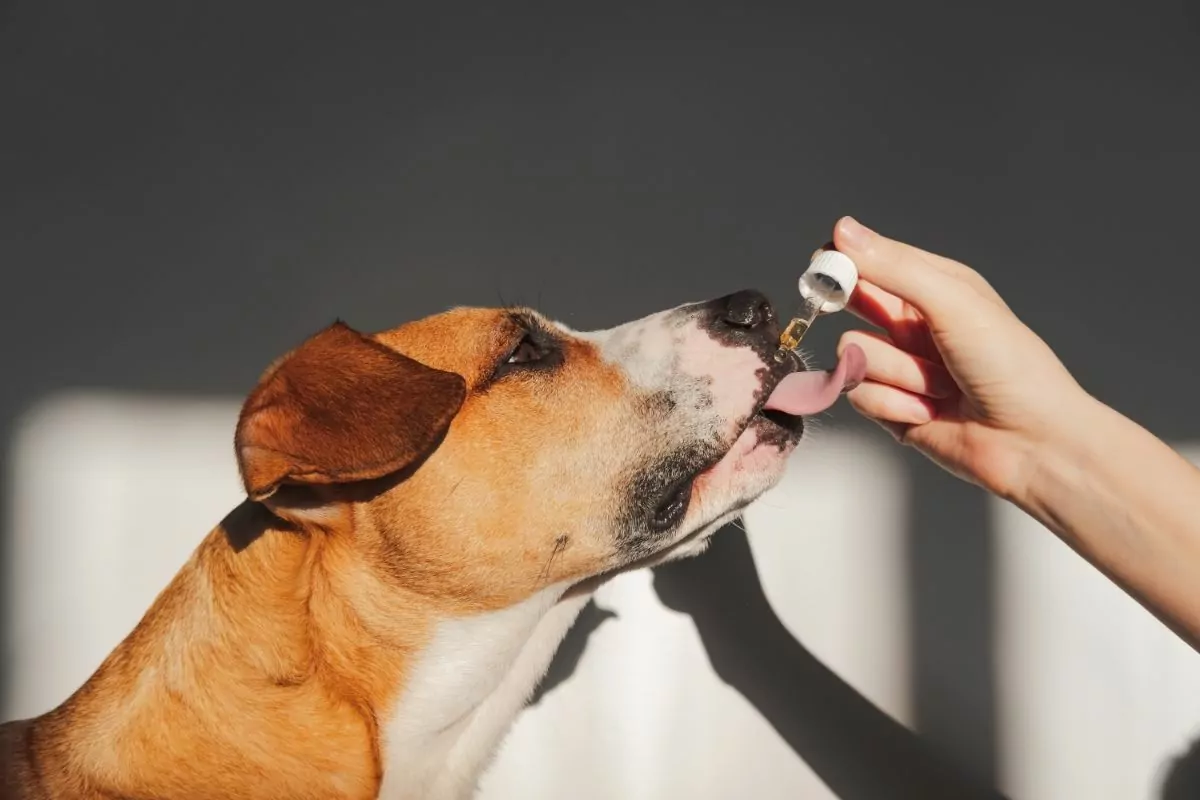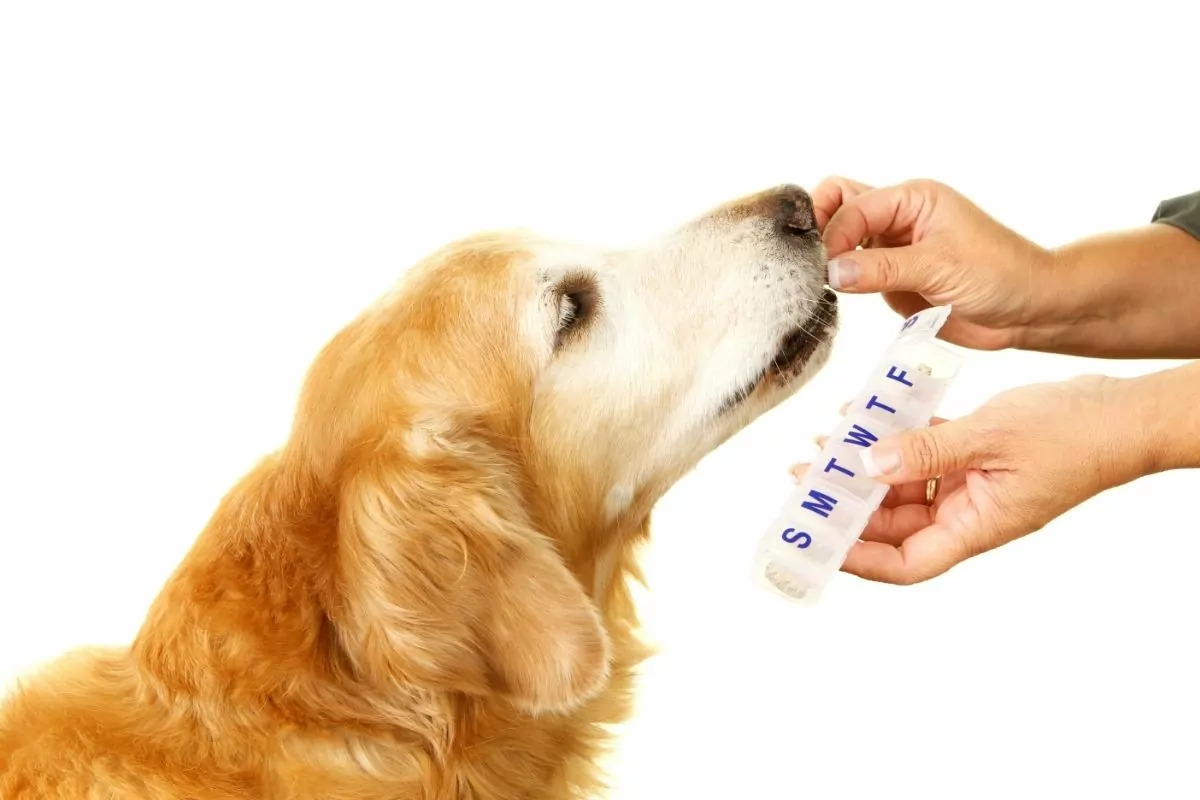Inappetance in Dogs
There are appetite stimulants for dogs that encourage dogs to fulfill their nutritional needs that otherwise would get lost during the anorexic period.
Inappetence in dogs can be very problematic and affect their health, which is no surprise as the body needs nutrient inputs to stay homeostatically stable and alive.
Loss of weight and other health complications are consequences of inappetence, and, therefore, early intervention is essential.

What Can You Do to Increase Appetite in Dogs?
What can you do when your dog becomes inappetence or lost interest in eating as much as it usually eats all of a sudden? The important thing is to find out the reason for inappetence. Fixing the causal issue will likely resolve the undesired loss of appetite and perhaps increase your dog’s appetite.
You may require assistance from veterinary professionals to pinpoint and establish an effective plan to treat the causal issue, but here are some things that you may be able to try at home to increase appetite in dogs:
- Warm up the food before you serve it. Warming the food can enhance its smell.
- Offer food with a pungent smell.
- Offer the meal in a way you offer the treats.
- Create a quiet, comfortable feeding environment away from traffic/crowded areas.
- Mix treats with meals.
- Verbal encouragement during feeding time.
- Offer food that is easy to masticate and ingest.
How Does Appetite Stimulant for Dogs Work?
There are many types of appetite stimulants for dogs, and the mechanism of action of each stimulus can be different. For example, some stimulants target stimulating appetite-inducing hormones, whereas others work by eliminating symptoms that cause inappetences, such as nausea, heartburn, or reflux.
6 Dog Appetite Stimulants
There are several options for appetite stimulants in dogs: natural, holistic, or pharmaceutical.
Natural
A definition of natural approach is an approach without the assistance of medical and non-medical alternative therapies labeled as veterinary medicine.
Some options are in the previous section: smelly food, warm food, readily consumable food, a treat/meal mixture, and enforcing environmental change are some examples of what can increase a dog’s appetite.
There are also natural appetite stimulants for dogs that some people have been using for years. One of the examples is herbs. Herbs such as chamomile, ginger, celery seed, and peppermint are often mixed in the food, even though many scientific studies did not support this practice in dogs.
You must be mindful that some herbs can be toxic to dogs if consumed in a large volume, and some can be toxic even in a small amount. Therefore, you should consult your veterinarian before offering any food that is not suitable for dogs.
A naturalistic approach to inappetence is something that many people try before seeking veterinary assistance or using as long-term management at home.
Holistic
Holistic is another way to approach the inappetence. Although alternative medicine is less common in veterinary patients, acupuncture has increased its popularity.
Traditionally, it was impossible to get such therapy for animals. Still, it is one of the options readily available for the owner as the number of qualified professionals has increased over the years. This is because many veterinary institutions worldwide have started to offer relevant qualifications.
Acupuncture aims to reduce primary symptoms such as pain, nausea, discomfort, and inflammation that may be triggering the inappetence. Many anorexic dogs with underlying medication conditions tend to have a good response after acupuncture sessions.
Pharmaceutical
The following products are commonly used medications and supplements in veterinary practice (both labeled and off-label use) that directly or indirectly help improve the appetite:
- Mirtazapine
- Meclizine
- Capromorelin
- Maropitant citrate
- Cannabinoid
Mirtazapine
Mirtazapine is a tetracyclic antidepressant commonly used to treat depression in humans. It acts on the central nervous system and upregulates the level of neurotransmitters in the brain. Increases in neurotransmitters such as serotonin and norepinephrine may stimulate relaxation and have antiemetic and appetite stimulant properties.
Side effects that you may see are lethargy, drowsiness, hyperactivity, muscle tremor/twitch, agitation, tachycardia (elevated heart rate), hypertension (elevated blood pressure), pyrexia (elevated temperature), dyspnoea (difficulty breathing), hypoxia, and dilated pupils.
This medication gets contraindicated for dogs with serotonin sensitivity or dogs taking other medicines that may interact with Mirtazapine.
Mirtazapine gets sold under the brand name Remeron.
Meclizine
Meclizine is an antihistamine that inhibits the stimulation of the brain’s vestibular system, which is responsible for detecting motion. This medication can reduce nausea associated with motion sickness and vestibular disease.
Possible side effects are lethargy, vomiting, diarrhea, and inappetence (if it is unrelated to nausea). In addition, this medication gets contraindicated in dogs with hypersensitivity or allergy. If the dog is taking other drugs, it is best to consult with a veterinarian before using them.
Meclizine is available under the brand name Bonine, Antivert, and Dramamine.
Capromorelin
Capromorelin is a synthetic hormone, ghrelin receptor agonist. It mimics the effect of ghrelin (the hormone produced by the gastrointestinal tract that stimulates the appetite).
There have been several side effects, such as diarrhea, vomiting, polydipsia, and hypersalivation. Also, some feline patients have experienced elevated blood glucose levels.
Capromorelin gets commonly sold under the brand name Entyce.
Maropitant Citrate Monohydrate
Maropitant is a selective neurokinin (NK1) receptor antagonist that inhibits substance P’s neurotransmitter in the central nervous system. Substance P is involved in emesis (vomiting). Therefore, the drug works as an antiemetic by blocking its activity.
Lethargy, anaphylactic reactions, muscle tremors, drowsiness, diarrhea, anorexia, inappetence, hypersalivation are rare but published side effects of this drug.
Maropitant gets contraindicated in dogs with hypersensitivity and dogs that are taking calcium-channel antagonists (e.g., Amlodipine, diltiazem, verapamil, nifedipine, and nicardipine). This is because Maropitant has an affinity for calcium ion channels.
Maopitant is available under the brand name Cerenia.
Cannabinoid
Cannabinoids are products that can interact with cannabinoid receptors within the body. The cannabinoid receptors are involved in the body’s physiological and cognitive processes, such as pain, sensation, memory, and appetite.
Cannabinoids can get extracted from cannabis /hemp plants or in synthetic forms such as Dronabinol and levonantradol. However, the use of cannabinoids is still a new concept in veterinary medicine, and the data regarding pharmacokinetics and efficacy in dogs are still minimal.
Note: A medication is identified as an off-label use when the medication gets used in a manner different from the official instruction of the product.

Why Do Dogs Lose Their Appetites?
There are many different reasons for inappetence. For example, dogs can lose interest in food due to pain, stress, physical impairment, cognitive dysfunction, diseases, medication side effects, and dietary intolerance.
Home Remedies for Dog Inappetance
Removal of the Causal Stressor if Applicable
Dogs showing inappetence due to stress or pain will likely regain the appetite if the stress-inducing and the pain-inducing stimulus is resolved or avoided.
Example: The stressor = Crowds (people, other dogs)
Solution = Feed the dog in a quiet area away from crowds.
Encourage Feeding by Offering Variety of Food
If the dog is not interested in eating certain types of food, you can try offering more varieties while maintaining the dog’s nutritional requirements.
Change the Feeding Technique
If you think your dog dislikes certain things about feeding time or having physical difficulties accessing the food bowl, try a different feeding technique. Is it about the food bowl? Then try a different shape, material, size, etc.
Warm the Food up
Hot food increases the air temperature surrounding the food, and the hot air moves faster than cold air. Hence, the smell or the aroma of food is more noticeable and intensified. This will likely stimulate the dog’s appetite if the dog favors that particular smell.
Assist Feed
Assist feeding may be necessary if your dog has a physical disability that prevents it from consuming food. For example, injuries within the oral cavity, dental disease, lethargy, visual impairment are some conditions that may require this.
It is important to note that assisted feeding must get done safely as it can stress and hurt the animal if a wrong technique gets used. Therefore, it is advisable to discuss with your veterinarian first if you are inexperienced.
Assist feeding gets contraindicated if the reason for inappetence has not gotten diagnosed yet. Your dog must be assessed by a veterinary professional first.
Over-the-Counter Meds
Several non-prescription over-the-counter products can stimulate the appetite in dogs. Many are homeopathic with a therapeutic effect on the appetite using natural or synthetic ingredients.
Some products stimulate the appetite and nutrient intake by offering highly palatable energy-rich multivitamin products. In contrast, other products use herbs and essential oils with appetite-increasing properties.
Prescription Medication for Increasing Canine Appetites
As aforementioned, there are several prescription medications available for dogs. Mirtazapine, meclizine, capromorelin, maropitant citrate, and cannabinoid are common in the veterinary field.
How to Give a Dog Medicine That Won’t Eat
Oral mediations are suitable if the dog still has a physical ability to swallow and a functional digestive system.
Injectable medications get indicated for the anorexic dogs suspected of having factors that may influence /impede oral ingestion and the digestive pathway.
Your veterinarian may recommend inserting the feeding tube (e.g., a nasogastric tube, an oesophageal tube, or a gastrostomy tube) to assist feed and provide nutritional support for dogs that get instructed to be Nil Per Os (nothing by mouth).
Examples of Nil Per Os dogs are those dogs with severe oral and upper digestive tract issues.
Do Appetite Stimulants for Dogs Work?
Some dogs may show improvement after starting the course of the appetite stimulants, while others take a while before showing significant improvement. However, the evidence of its efficacy should be visible by looking at your dog’s food bowl.

To Eat, or NOT to Eat
To eat or not to eat is not a question when it comes to your dog losing an appetite.
Inappetence in dogs is an uncomfortable and stressful condition that no owner wants to witness.
Inappetence means the dog is not getting sufficient nutrients to maintain homeostatic balance within its body.
Many different reasons can trigger inappetence: traumatic injuries, stress, pain, underlying diseases (dental, hormonal irregularities, neoplasia, cognitive dysfunction, and other systemic conditions), and the affected dogs show loss of energy, weight loss, and other symptoms associated with underlying issues.
There are naturalistic, holistic, and pharmaceutical approaches to improve the dog’s appetite, but it is essential to make sure you choose the most suitable approach for your dog. Then, after identifying the reason for the inappetence, you can select through a veterinary assessment.
Owners of dogs should constantly monitor their dogs’ daily food intake and feeding behaviors so reduced appetite or inappetence can be detected and can be intervened or treated early.
